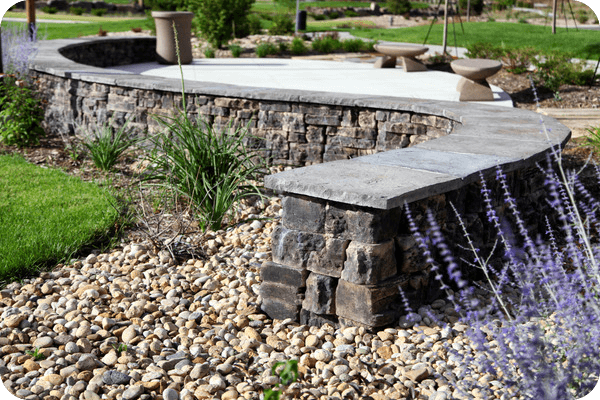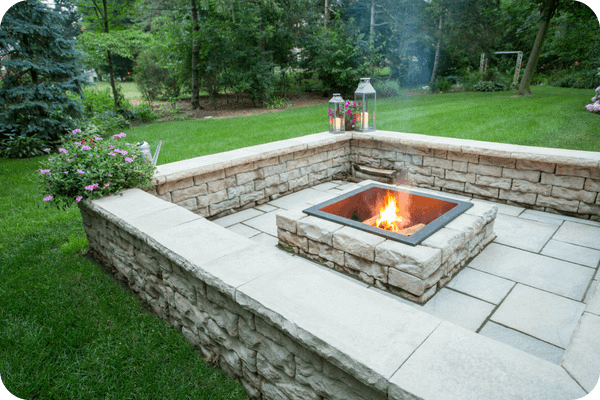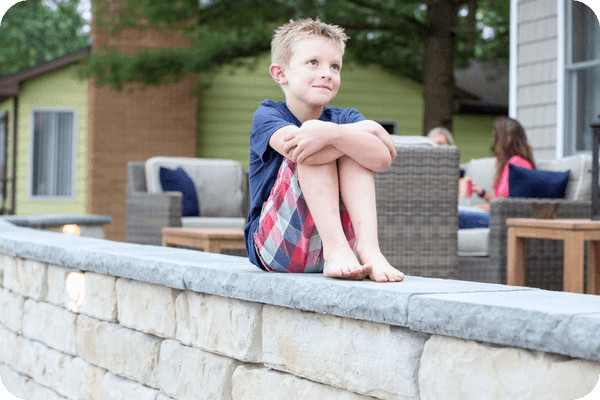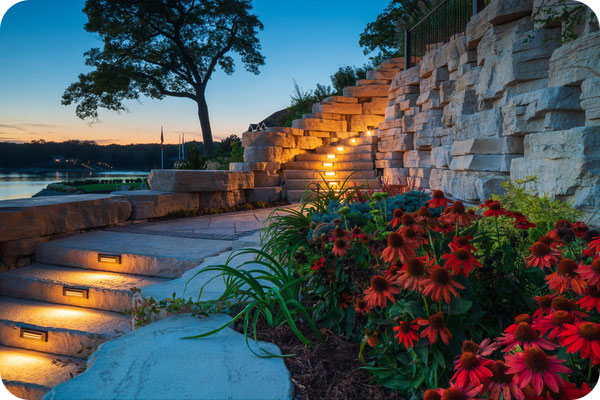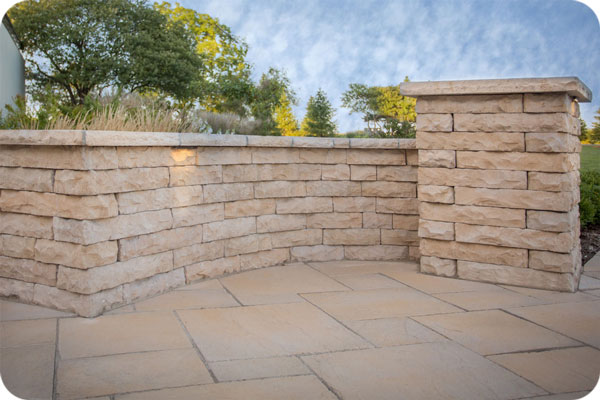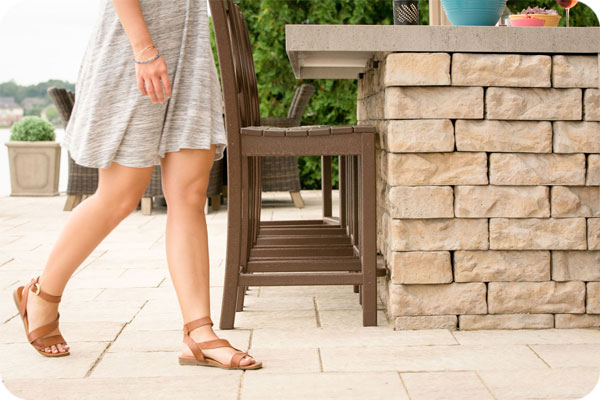FREESTANDING WALLS
Seating, frame pathways, and border patios
Kodah
MODERN-ISH
Contemporary lines and a slightly larger scale combine to offer a trendier look.

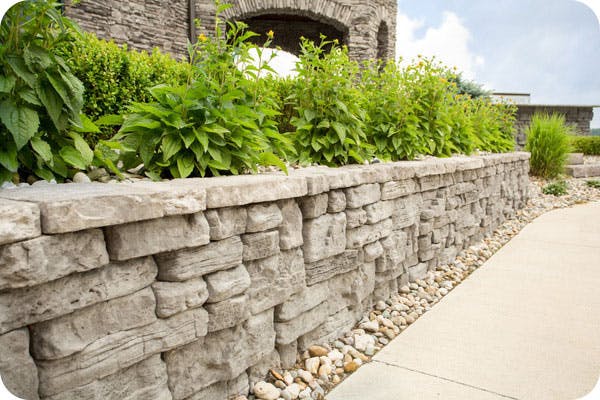
PLANNING RESOURCE
Create the backyard of your dreams
Consult our comprehensive step-by-step guide to accelerate the design and installation of your new outdoor living space.
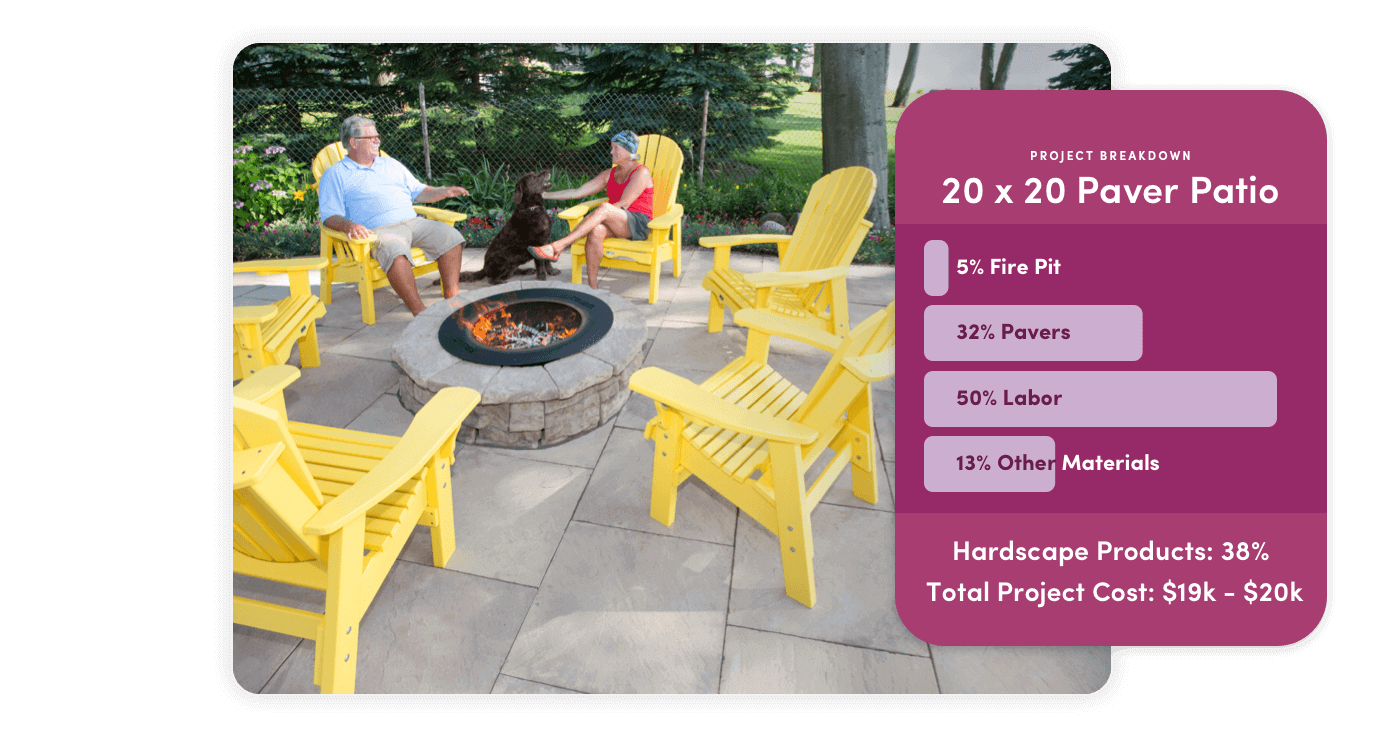
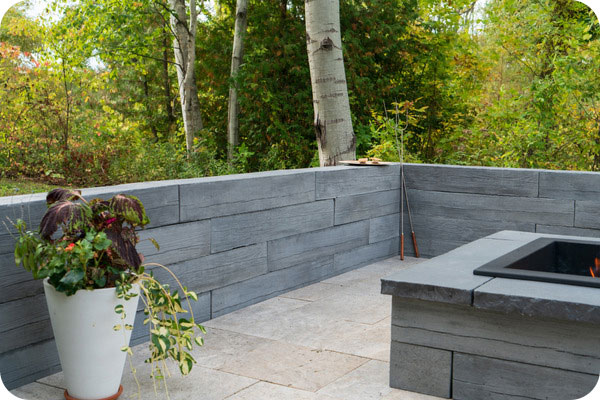
Heartwood Wall
Long-lasting, low-maintenance alternative to wood without compromising on looks
Retaining walls and freestanding walls. Learn the difference!
Walls are walls, right? That’s not entirely true. Retaining and freestanding walls may look similar, but they perform vastly different functions.
A retaining wall is typically 3 ft (0.91 m) or taller and used to hold back large volumes of soil. Its installation may require engineering and securing local permits. In residential applications, retaining walls are most often used to manage hills or slopes with tiering so you can enjoy maximum use from your space.
Freestanding walls are usually shorter, mainly decorative, and don't support heavy loads like soil or structures. This usually allows installation by an experienced contractor without engineering involvement or permits. Freestanding walls are typically used to establish a patio’s boundaries, create seating, or craft an outdoor kitchen or grilling station.
